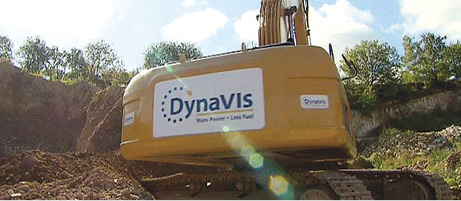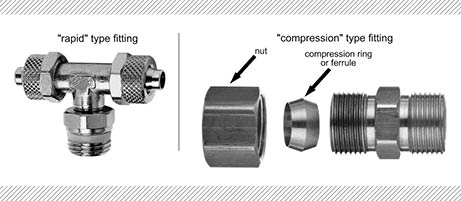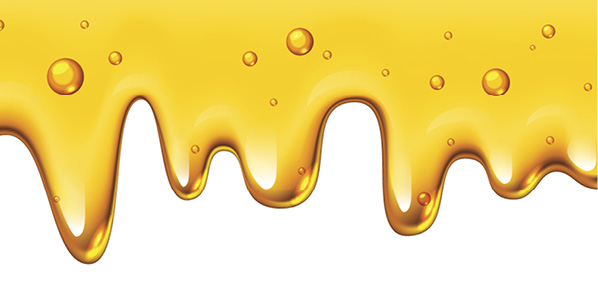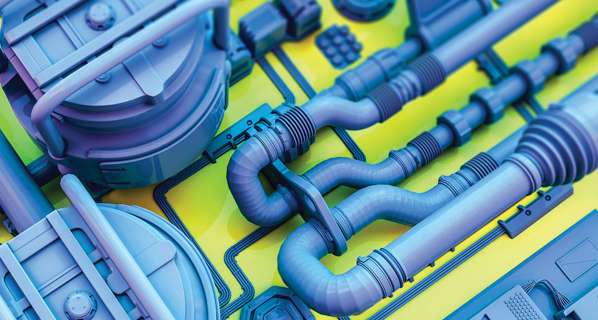High-Performance Hydraulic Fluids Boost Fuel Efficiency

Manufacturers of construction equipment are always looking for ways to make their equipment more efficient and cost effective. And now these manufacturers are specifying high-performance hydraulic fluids formulated with DYNAVIS® technology to “factory-fill” their excavators, wheel loaders, and many other types of equipment operating with hydraulic systems.
Most of the movements performed by construction equipment are powered by hydraulic systems, and much of the fuel consumed is used for operating the hydraulic pump—the heart of the hydraulic system. The pump’s performance, however, is only as good as the quality of the fluid it pumps. The longer and more intensively the equipment is used, the hotter and thinner the fluid becomes, resulting in a pump phenomenon known as “internal leakage.” Internal leakage within a hydraulic pump is caused when hot, thin hydraulic fluid backwashes through the pump’s vanes or pistons, resulting in sluggish performance and a significant loss of efficiency. What’s more, the additional friction created causes the hydraulic fluid to become even hotter, and consequently, thinner.
Hydraulic fluid formulated with DYNAVIS® technology reduces the loss of power due to internal leakage and puts the brakes on the resulting vicious cycle of the fluid becoming hot, thin, and then again, hotter and thinner. Not surprisingly, hydraulic excavators that are pushed to the limits of their capacity in shifts lasting several hours get a big boost in performance when their hydraulic fluid is changed out to a fluid formulated with this technology.
Construction equipment owners and operators can easily calculate the payback from switching to hydraulic fluids formulated with this technology. An easy-to-use calculator at www.dynavis.com provides an answer in seconds. Very little data is required for the calculator to compute the potential fuel savings, the increase in efficiency, and reduction in CO2 emissions. The calculation is based on actual results from extensive field tests to ensure that the values returned by the calculator are reliable.
With fluids formulated to DYNAVIS® technology standards, the output of the hydraulic pump remains stable even after several hours of operation under full-load conditions. The increased agility and performance of the construction equipment results in more load cycles and fuel savings of 5% or more.
Q&A with Dr. Ralf Düssel, Managing Director, Oil Additives Business Line, Coatings and Additives Business Unit, Evonik Industries AG
How was the DYNAVIS® hydraulic fluid technology developed to make it so efficient?
 The development of DYNAVIS® hydraulic fluid technology was born out of a fundamental desire to focus more closely on the fluids used in fluid power, rather than the mechanical systems. We realized that with our know-how, we are able to modify fluid viscosity in a controlled way to minimize “internal leakage” in hydraulic systems. The result is increased overall hydraulic efficiency.
The development of DYNAVIS® hydraulic fluid technology was born out of a fundamental desire to focus more closely on the fluids used in fluid power, rather than the mechanical systems. We realized that with our know-how, we are able to modify fluid viscosity in a controlled way to minimize “internal leakage” in hydraulic systems. The result is increased overall hydraulic efficiency.
What was the inspiration behind developing this technology?
Evonik saw a trend in the fluid power market that was moving in the direction of creating higher-efficiency hydraulic systems. It was obvious to us that OEMs were putting a lot of resources into the effort to improve the efficiency of their hydraulic equipment, both mobile and stationary. From our perspective, we saw that hydraulic fluid was not being sufficiently considered as a major contributor to achieving higher efficiency.
We wanted to be part of the development of a new generation of high-efficiency hydraulic fluids, and we began with fundamental studies in our lab. Early on, we identified the additives that were required to improve hydraulic fluid efficiency with a series of lab tests. Subsequently, we developed a hydraulic pump test rig to measure the impact of hydraulic fluid on efficiency.
Shortly thereafter, we began a series of performance demonstrations in the field. At that time, no standardized testing protocol was available to us. So, in addition to the development work we performed to improve hydraulic fluid efficiency, we also developed a number of procedures to carry out performance demonstrations in the field.
Over the years, we have expanded the range of these performance demonstrations to include excavators, skid steer loaders, wheel loaders, and injection-molding equipment. And, more recently, we have branded our technology for hydraulic fluids with the registered trademark “DYNAVIS®.”
How do you feel this technology fills a void in the fluid power industry?
Our significant improvement of the efficiency of hydraulic fluid perfectly complements the design improvements that OEMs have developed in their newer models. And it also benefits older equipment still in use for which the cost of retrofitting new, more-efficient hardware would be prohibitive.







